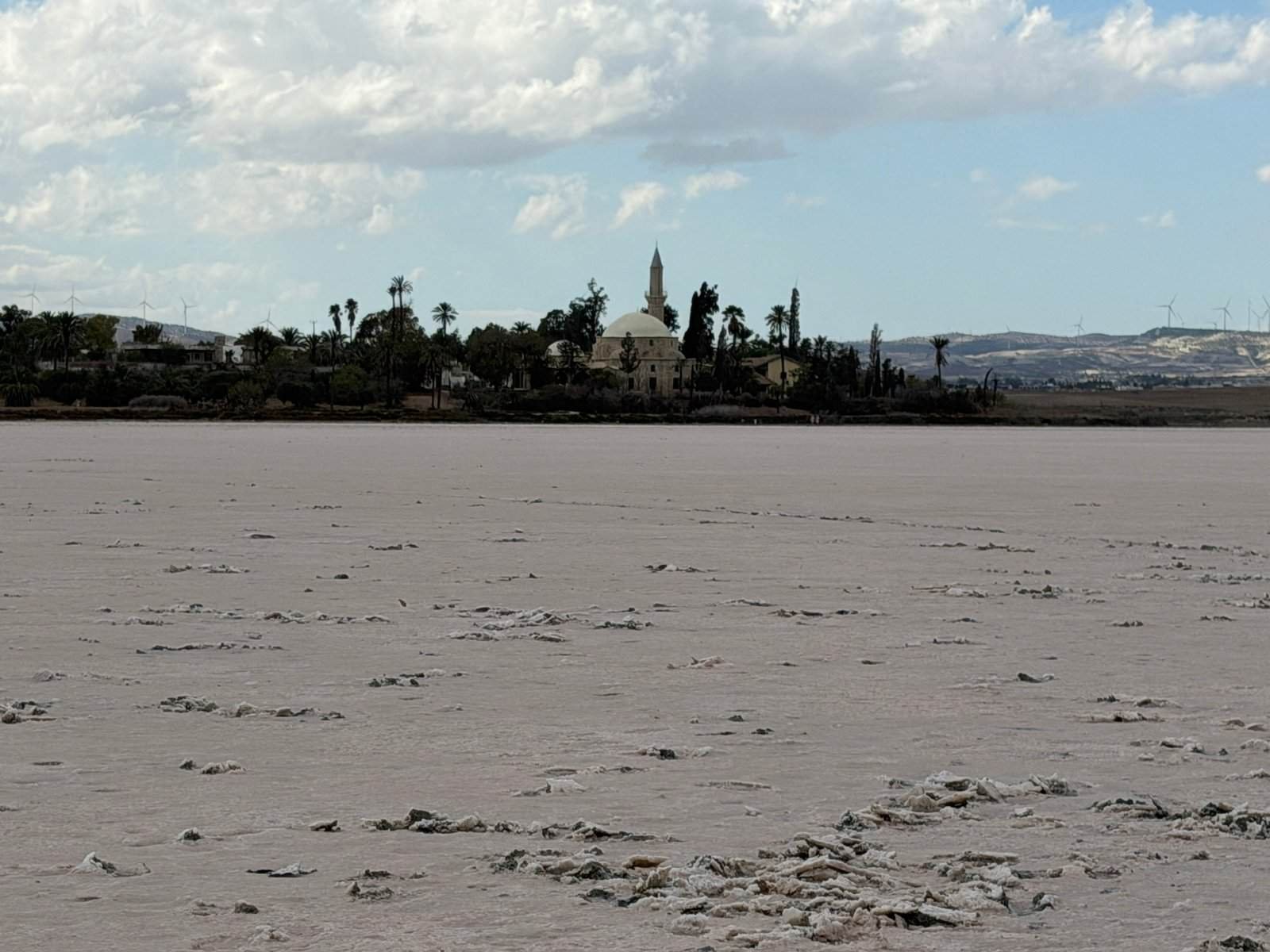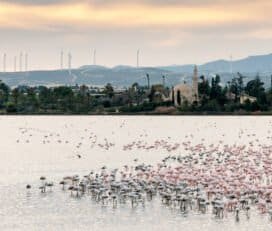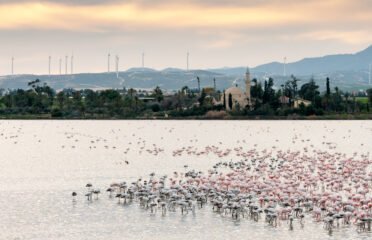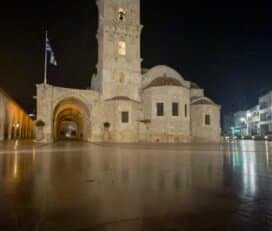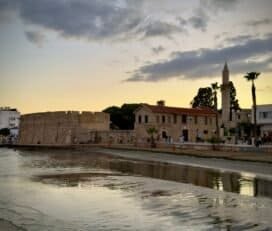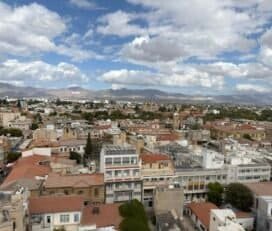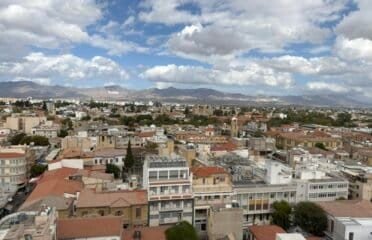Larnaca Salt Lake – Larnaka, Cyprus
Overview
The Larnaca Salt Lake (Alyki Larnakas) is one of Cyprus’s most captivating natural landmarks — a vast shimmering expanse that transforms dramatically with the seasons. Located just west of Larnaka city and near the airport, this protected wetland complex is made up of four interconnected lakes: Alyki, Orphani, Soros, and Spiro. During winter, the basin fills with rainwater and becomes a haven for migrating birds, including the famous pink flamingos that arrive in the thousands. In summer, the water evaporates, leaving behind a crust of white salt that glitters under the Mediterranean sun. Whether you visit for its wildlife, tranquil scenery, or spiritual history, the Larnaca Salt Lake is a must-see stop that captures the island’s natural beauty and serenity.
Why Visit
- Witness thousands of pink flamingos and other migratory birds during winter
- Enjoy peaceful walking trails with panoramic views of the lake and surrounding landscape
- Visit the nearby Hala Sultan Tekke Mosque, one of Cyprus’s most sacred Islamic sites
- Experience one of the most photogenic spots in Larnaka, changing with the seasons
- Learn about the lake’s ecological importance and its role in Cyprus’s cultural history
Highlights
- Flamingos and Birdlife: Seasonal flocks of flamingos, herons, and ducks create a vibrant spectacle between November and March
- Nature Trails: A network of walking and cycling paths along the lake’s edge with benches and lookout points
- Hala Sultan Tekke: A historic mosque overlooking the lake, dedicated to Umm Haram, a revered figure in Islamic history
- Photography: Sunrise and sunset reflections over the salt flats offer some of the best photo opportunities in Larnaka
- Seasonal Transformation: Watch the landscape shift from a glittering salt crust in summer to a bird-filled lagoon in winter
History & Cultural Significance
The Larnaca Salt Lake has been part of Cyprus’s landscape and livelihood for millennia. In ancient times, the salt harvested here was a valuable export, known as “white gold” and traded across the Mediterranean. The lake’s proximity to Kition (ancient Larnaka) made it a crucial part of the region’s economy. Beyond its economic importance, the site holds deep religious and cultural significance. Overlooking the western shore is the Hala Sultan Tekke Mosque, built in the 18th century over the tomb of Umm Haram, the aunt of the Prophet Muhammad. Today, the lake is a Ramsar-protected wetland and part of the EU Natura 2000 network, recognized for its ecological value as a vital stopover for migratory birds. Its dual identity — both sacred and natural — makes it one of the most spiritually and visually striking places in Cyprus.
Typical Costs & Tickets
Visiting the Larnaca Salt Lake is completely free. The walking trails, viewpoints, and parking areas are open year-round, and access to the site is unrestricted. Admission to the nearby Hala Sultan Tekke Mosque is also free, though donations are appreciated. Guided birdwatching tours are available during winter months and typically cost around €15–€30 per person, depending on group size and duration. Photography enthusiasts can explore the trails independently, though sunrise and sunset tours are particularly popular for capturing the lake’s surreal light and reflections.
Best Time to Visit
The best time to visit the Larnaca Salt Lake depends on what you want to experience. Winter (November–March) is ideal for birdwatching, when flamingos and other migratory species flock to the water. The lake is full and shimmering, with mild temperatures perfect for walking. Spring and autumn bring pleasant weather and fewer crowds, making it great for photography and quiet exploration. In summer (June–August), the lake dries up and leaves behind a dazzling salt crust — a surreal, otherworldly landscape that contrasts beautifully with the deep blue sky. Early mornings and late afternoons are the most comfortable times to visit year-round.
Nearby Experiences
The Larnaca Salt Lake sits just a few kilometers from the city center, making it easy to combine with other local attractions. Visit the Hala Sultan Tekke Mosque on the lake’s western shore, then head to the Holy Church of Saint Lazarus and the Larnaka Medieval Fort in the Old Town. The nearby Finikoudes Promenade offers cafés, shops, and a sandy beach for a relaxing afternoon. For nature lovers, a short drive west leads to the Lefkara village, famous for lace-making and silverwork, and to hiking trails in the foothills of the Troodos Mountains.
Travel Tips
- Visit during winter for flamingo sightings — bring binoculars or a camera with a zoom lens
- Wear comfortable shoes and sunscreen if walking the trails; there’s little shade
- Respect the wildlife — stay on designated paths and avoid loud noises
- Stop at Hala Sultan Tekke for both cultural and scenic views over the lake
- Arrive at sunrise or sunset for the best light and reflections for photography
Fun Facts & Local Legends
- The Larnaca Salt Lake is the second largest salt lake in Cyprus, covering nearly 2.2 square kilometers
- Flamingos migrate here annually from Africa, feeding on brine shrimp in the salty waters
- In ancient times, the salt harvested from the lake was considered more valuable than gold
- Locals say the pink hue of the flamingos reflects the color of the Mediterranean sunsets


